NZXT H510 Elite review: A stunning and functional compact mid-tower PC case
The NZXT H510 Elite case promises a sleek design with all the necessary features to create amazing-looking PCs.
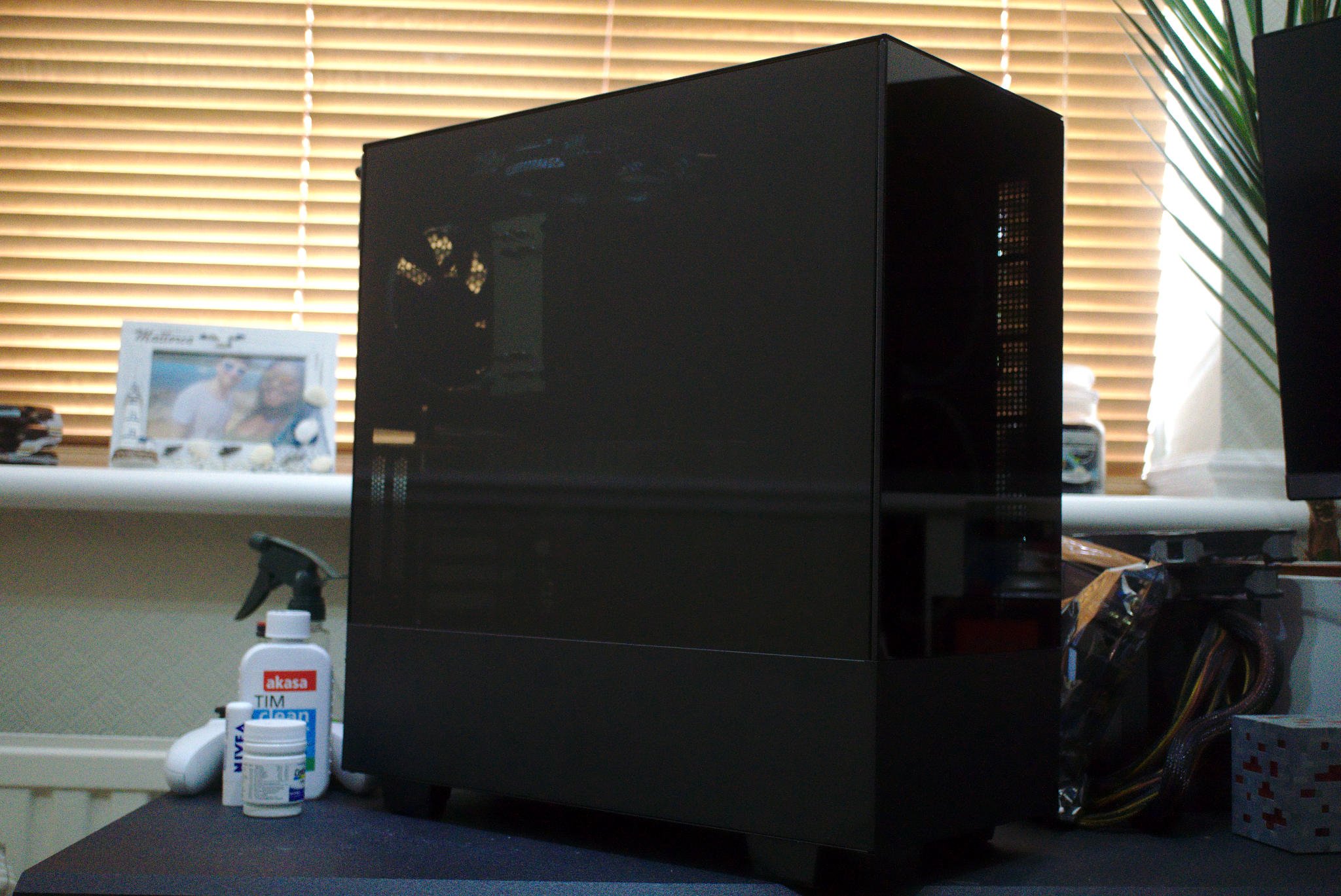
We first saw NZXT's H510 Elite in person at Computex, it looked good in person, and I was anxious get one in to play around with and actually build a PC. The new H510 Elite joins other refreshed H series cases but goes one step further by offering the new Smart Device V2 for all your lighting needs and a new tempered glass front panel.
Has the wait paid off, and is this a mid-tower case you must consider for your next PC build? The H510 Elite commands a hefty price so it needs to deliver. But NZXT really nailed it.
Editor's note: NZXT provided Windows Central with a review sample, which was used for in-depth testing and this review. We received a consumer package to emulate exactly what you'll receive should you purchase this PC case.
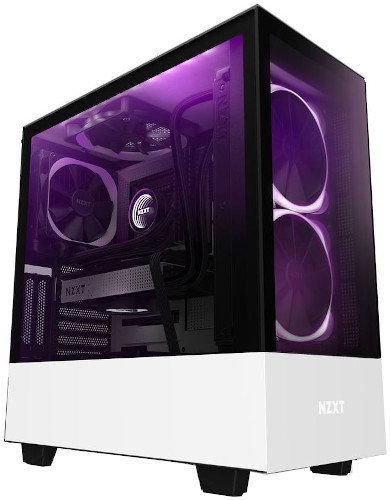
Costs $170Bottom line: A sleek-looking mid-tower PC case.
For
- Beautiful design
- Good airflow
- Supports water-cooling
- Includes RGB Aer fans
- Cable management
Against
- No GPU riser
- Top fan mount vibrations
NZXT H510 Elite is one gorgeous PC case
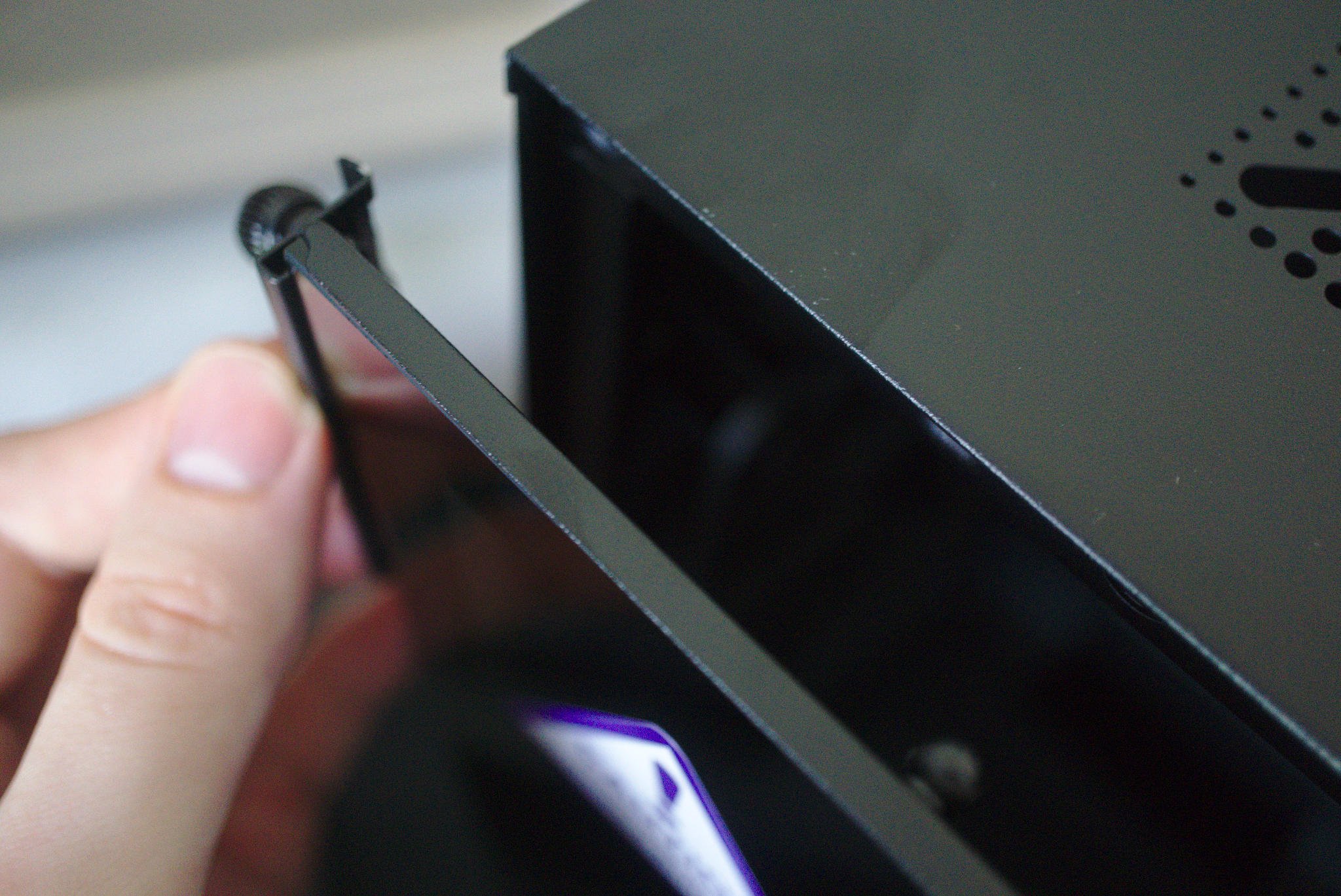
Alongside the case itself, NZXT bundles a box full of goodies with a quick-start guide and various accessories you may need. The H510 Elite is a mid-tower PC case that can house anything up to an ATX motherboard with the heftiest aftermarket GPU you can find. It's not the largest case of its class, so don't go planning complicated water-cooling loops, but you can cram a whole lot of hardware inside.
| Category | Spec |
|---|---|
| Motherboards | ATXMicroATXMini-ITX |
| I/O | One USB 3.1 Gen 2 Type-COne USB 3.1 Gen 1 Type-AOne Headset Audio Jack |
| Expansion | 7 PCI2+1 HDD/SSD |
| Fans | Front: Two 120/140 mmTop: One 120 mmRear: One 120 mm |
| Filters | FrontPSU |
| Radiators | Front: 120/240 mm and 140/280 mmRear: 120 mm |
| Clearance | GPU: up to 381mmCPU: up to 165mm |
| Weight | 7.5 kg |
| Dimensions | 210 mm x 460 mm x 428 mm |
| Materials | SGCC Steel, Tempered Glass |
| Warranty | Two years |
After unboxing everything, the first step is to take off the two side panels, which is an easy process. The metal side panel is held on by two thumbscrews — the same setup with most PC cases — but the tempered glass panel is secured by a single thumbscrew on the rear with some rubber grommets that hold it to the main chassis.
The front tempered glass panel is one of the new highlights of the H510 Elite case, and it too can be detached from the case. What NZXT did is install a fan or radiator cage that allows you to quickly swap out fans and radiators (up to 280 mm) depending on your desired configuration, making it easy to try out different components. The H510 Elite comes rocking two 120 mm Aer RGB fans pre-installed.
Two additional fan mounts are present on the rear (120 mm) and top (120/140 mm) of the case, though you'll only find dust filters on the front intakes, as well as the PSU. On the back of the H510 Elite sit seven PCI expansion slots and two vertical GPU slots should you have a spare riser cable at hand. For I/O, we're looking at USB 3.0 in USB Type-A and Type-C flavors, next to a 3.5 mm jack.
Get the Windows Central Newsletter
All the latest news, reviews, and guides for Windows and Xbox diehards.
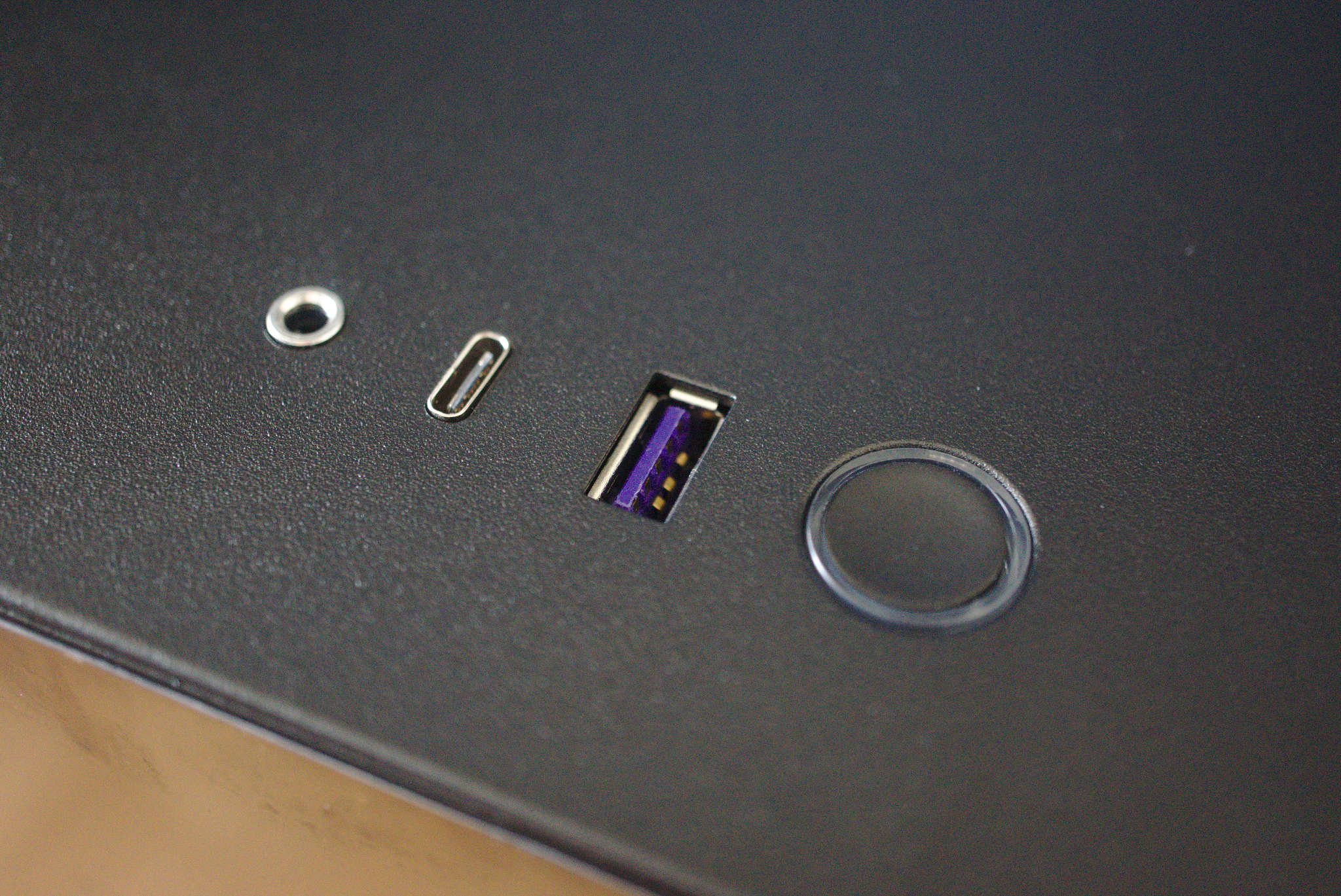
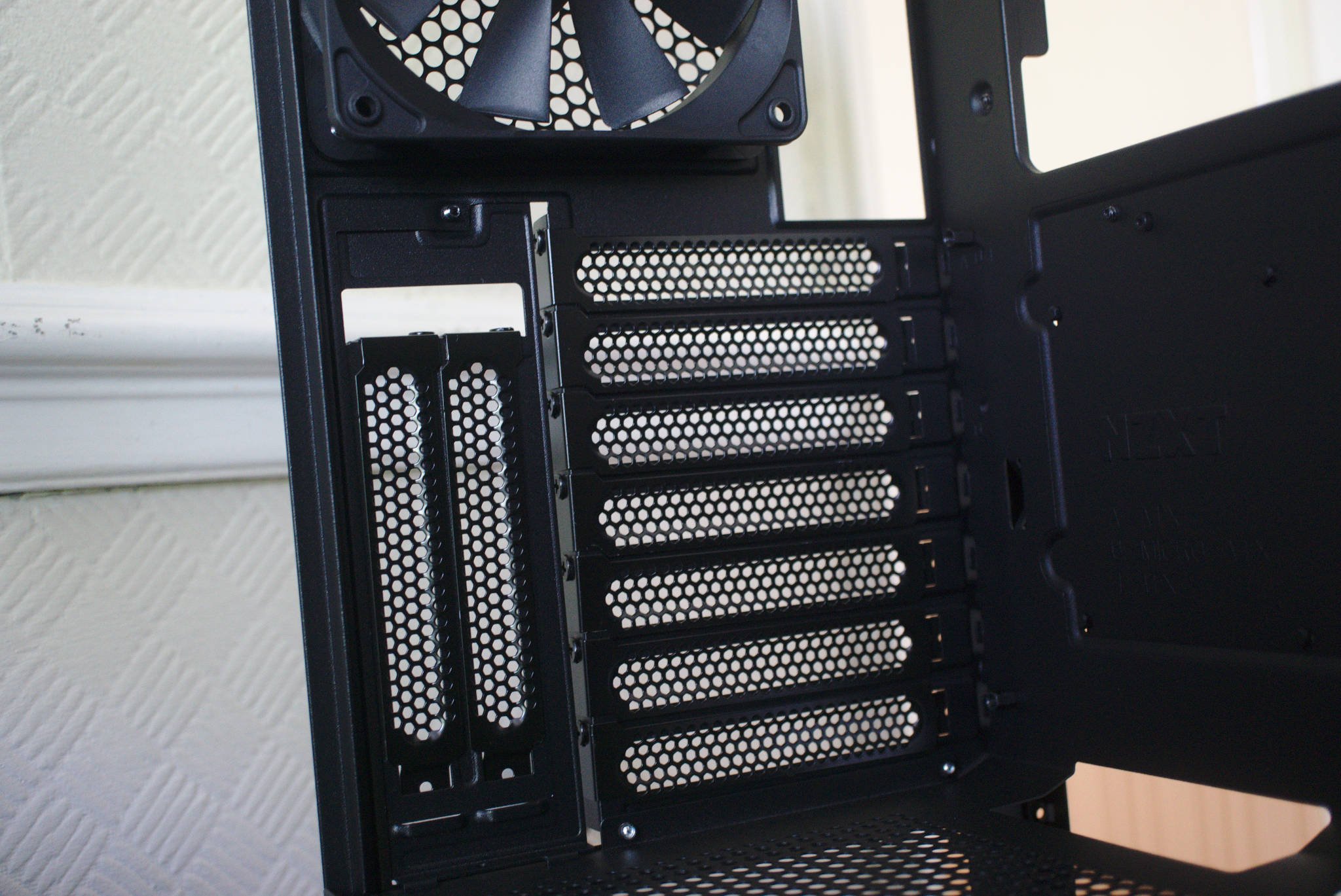
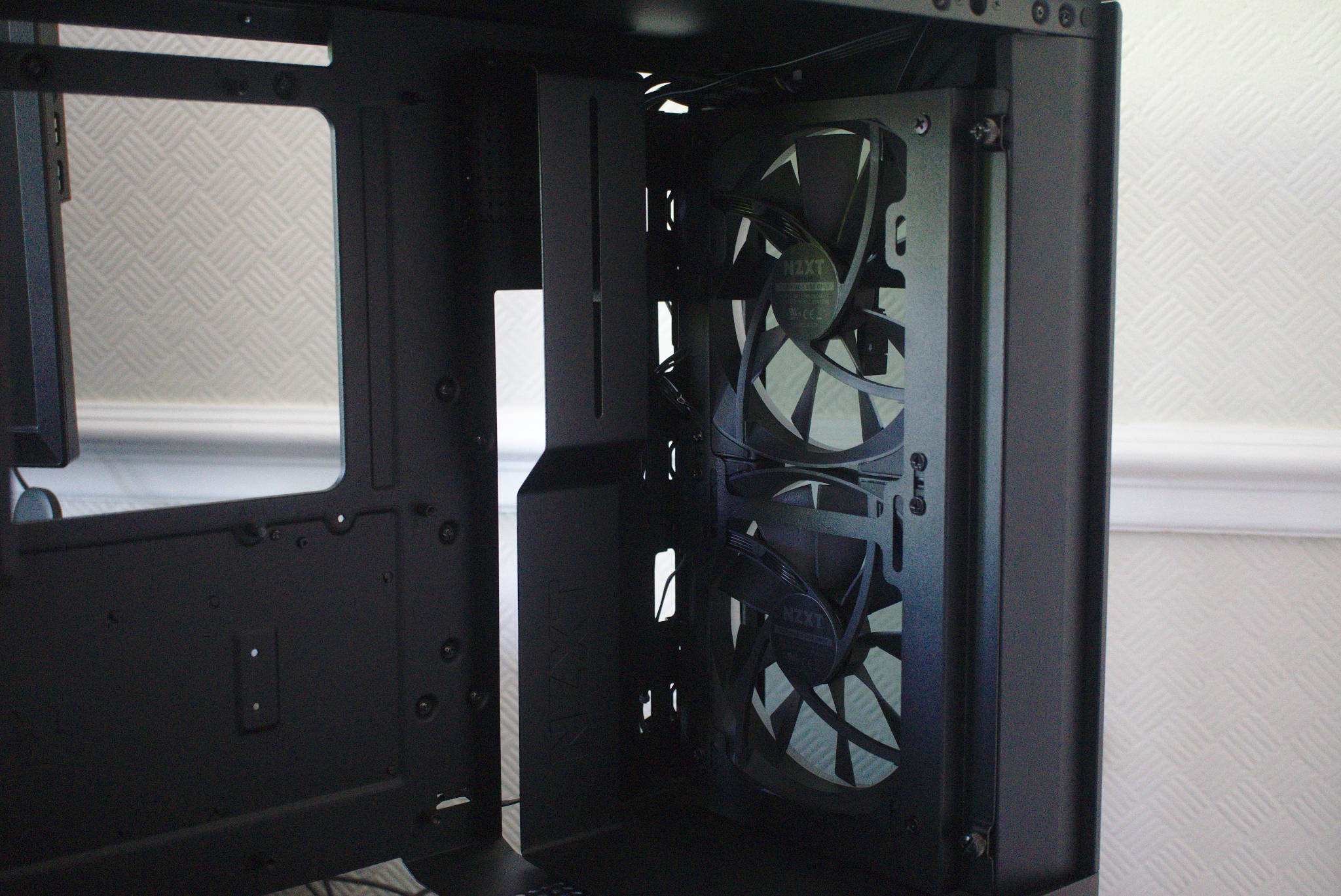
NZXT did a stellar job with the H series and this case looks stunning. The tempered glass works really well with the aforementioned Aer RGB fans in the front — alongside the pre-installed RGB LED strip located at the top of the case — and it looks like an expensive piece of kit, which is exactly what you'd expect from the price tag.
Building in the NZXT H510 Elite is a dream
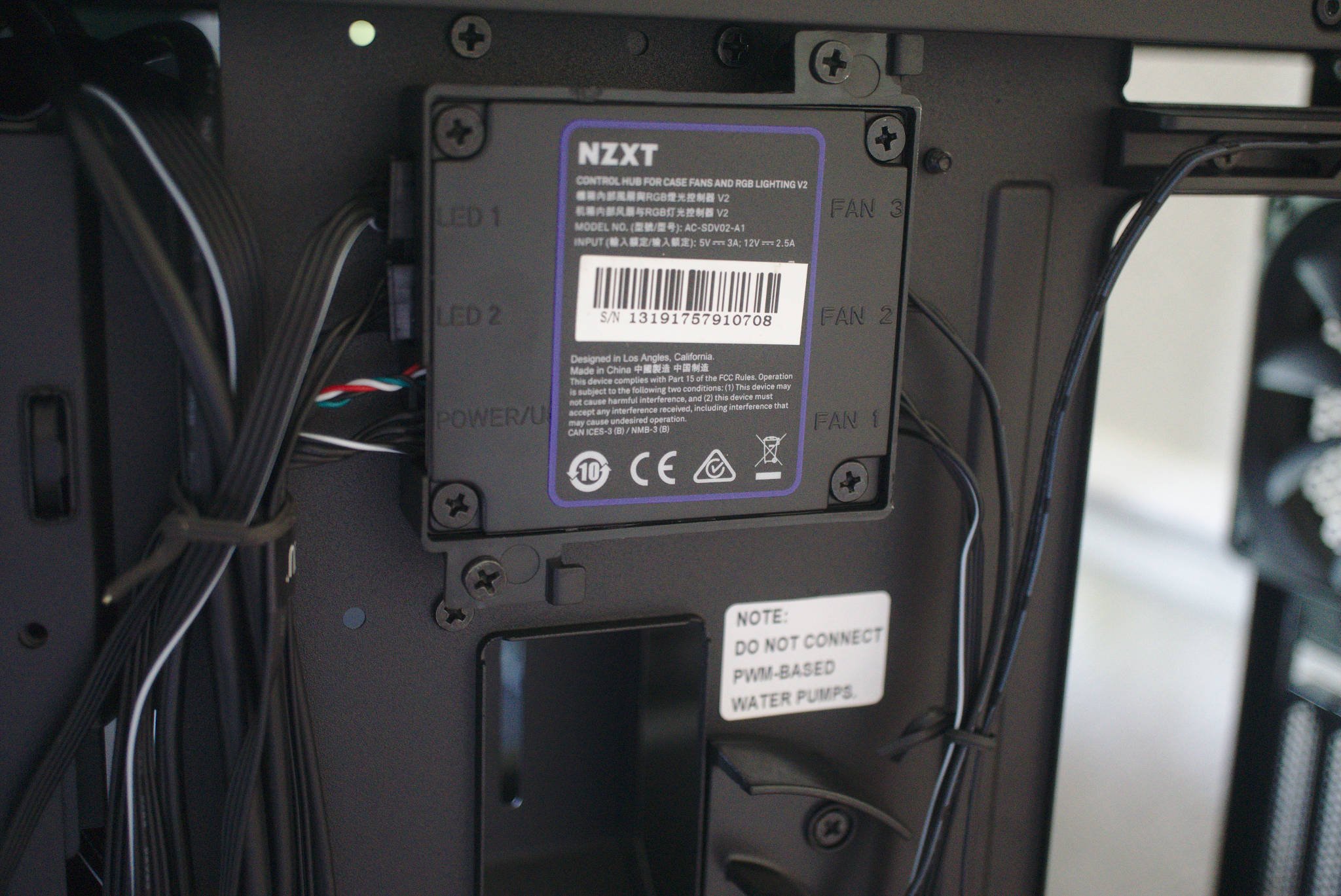
There's not a whole lot of space for cabling on the rear of the motherboard plate, but there's more than enough room to feed everything through the handy channels with velcro tiers. The PSU shroud hides the mess that is your power supply and all the cables that connect to various components, and it keeps the main section of the case looking neat and tidy.
There isn't an SSD tray attached to the PSU shroud since this actually forms the outside part of the case below the tempered glass side panel. What you do have are three toolless HDD and SSD sleds located within the shroud, making it easy to hook them up to the PSU and motherboard, keeping them out of sight. Speaking of which, the shroud has convenient cutouts for PCIe power for GPUs.
Installing the motherboard, case fans, SSDs, the PSU and everything else was straightforward, and NZXT makes it easy to hook up front-panel connections by bundling all the required cables. The included Smart Device V2 from NZXT is a dedicated fan and RGB controller, allowing you to connect a whole host of supported devices — NZXT already connects the front two AER RGB fans and RGB LED strip to this unit.
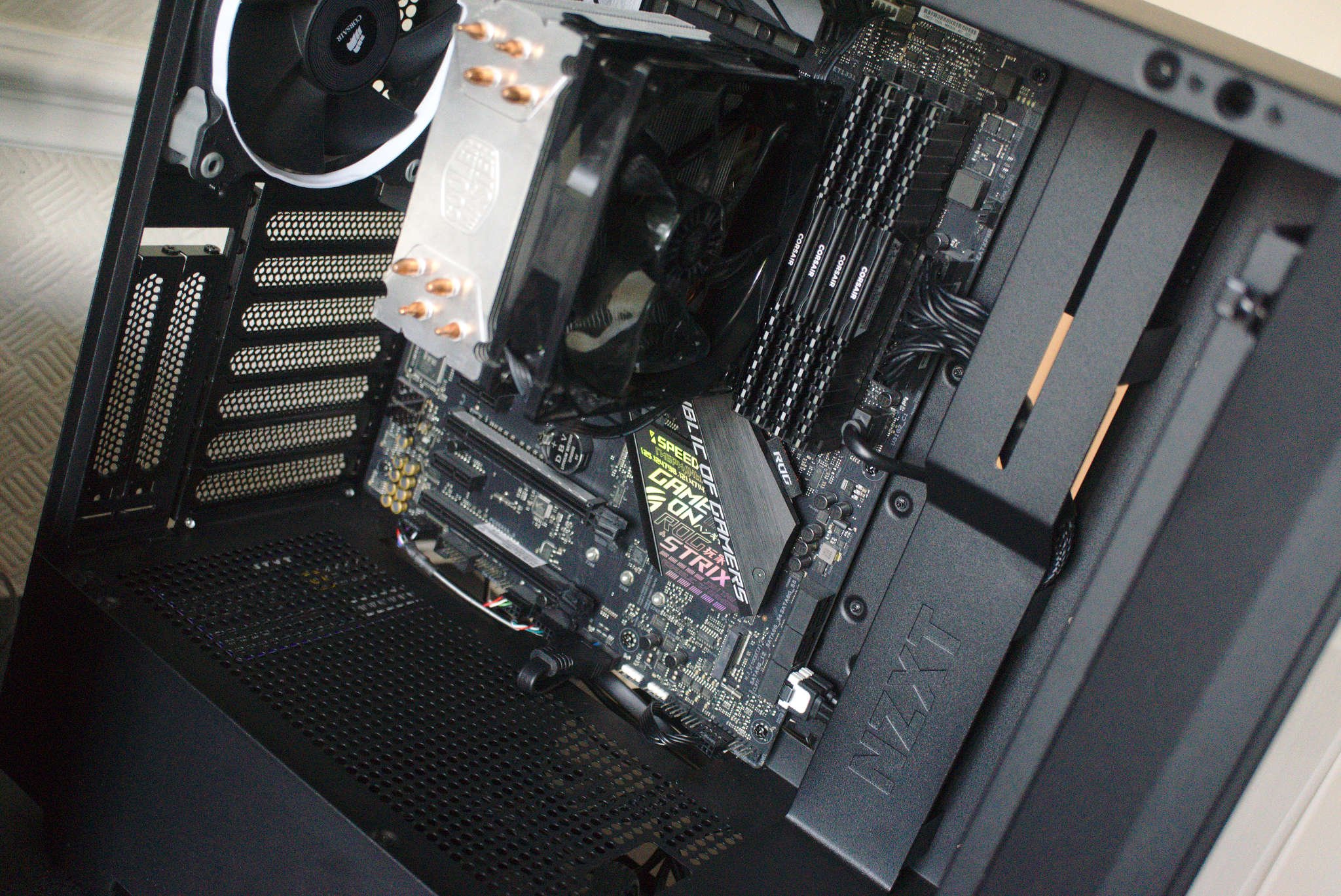
Activating the light show took a free USB header on the motherboard, allowing CAM software to take control and SATA power. I'm impressed we're using SATA here and not old-school Molex, which other case vendors still use to this day. You don't have to use the RGB lighting. In fact, disabling it may make the case look even better with the darkened glass
The NZXT H510 Elite is a drop-dead gorgeous mid-tower PC case.
For performance, airflow is decent enough for even more power-hungry builds. We put together a test rig including an AMD Ryzen 9 3900X CPU, ZOTAC AMP! Extreme GTX 1070 GPU, and 32GB RAM with a Seagate FireCuda NVMe SSD. This all kicks out a considerable amount of heat. Using NZXT's E500W PSU allowed us to hook everything up to CAM. Temperatures were well within safe operating ranges, with the CPU barely hitting 70 Celcius (160 Fahrenheit) under stress testing.
The two intake strips on the front panel may be alarming at first, but they allow the front fans to pull in enough cool air. Using two Corsair AF120 fans for the rear and top vents to act as exhausts, it was easy to configure the H510 Elite and forget about temperatures. Swapping out the Cooler Master EVO 212 for an AIO CPU would have knocked off a few degrees too.
You'll dislike very little with this case
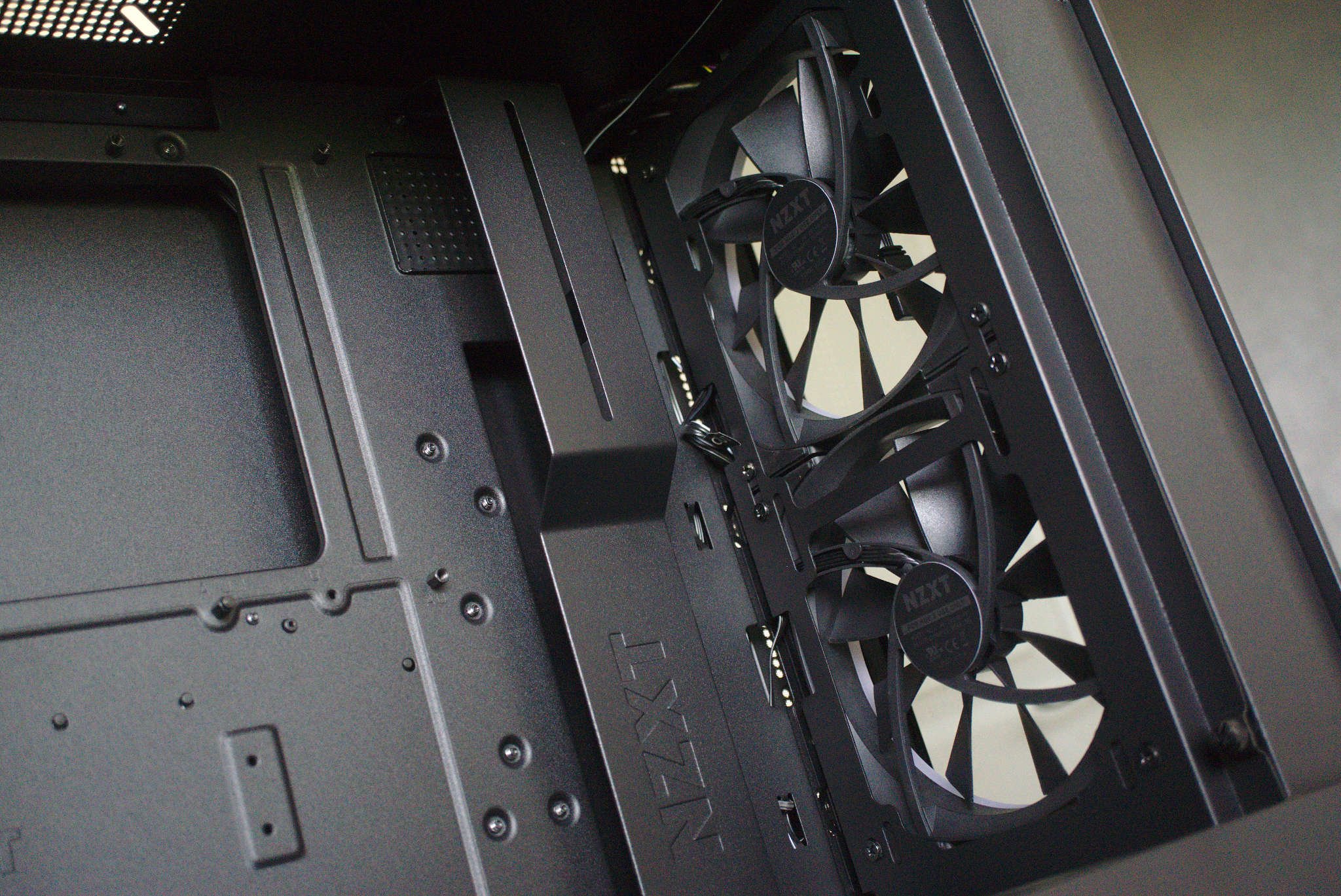
The H510 Elite is very good on all fronts. It's easy to build in, is made of high-quality materials, comes rocking advanced RGB lighting, has a unique look to boot, and airflow is good enough for even more power-hungry components. But there are a few minor gripes that I came across.
Firstly, there's no included vertical GPU mount or riser cable, meaning you'll need to buy this as an extra if you want to make use of the vertical GPU mounting brackets on the back of the case. This seems strange, but I can understand why NZXT would omit the cabling since other vendors have had issues with reliability in the past, including Thermaltake with the Core P series.
I also found the main bar that protrudes from the backplate to be a little finicky when it came to running through bulky cabling. Depending on your motherboard and the position of ports on the PCB, you could have to bend cables and connectors in rather strange ways. Luckily, it's not only adjustable using a few screws but can be removed altogether.
Finally, after testing a variety of fans — including models NZXT ship out with their own cases — the top fan mount can see the fan hit against the case ever so slightly while in motion, causing some notable vibrations. It's not a constant whine, but you can notice a very slight sound every now and then. I was eventually able to eradicate it through loosening and tightening screws, but your mileage may vary.
So should you buy the NZXT H510 Elite?
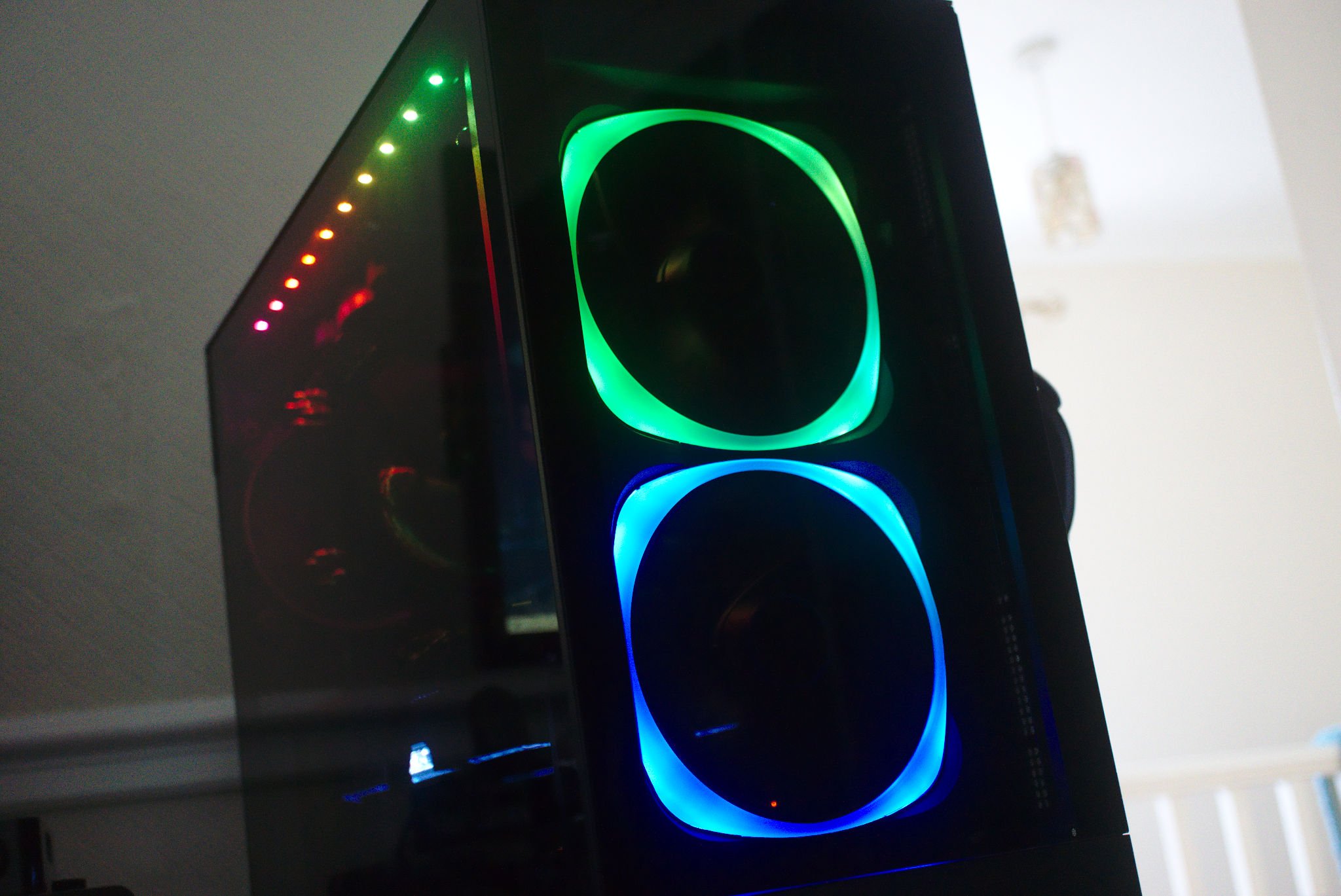
You should shortlist the H510 Elite from NZXT if you have a large enough budget to cover the cost, are seeking a unique looking PC case, and love some tempered glass. The refreshed Smart Device V2, USB Type-C, and included Aer fans make the H510 Elite functional, as well as good looking.
It's quiet, even with a rather noisy top fan due to vibrations with the case, is able to pump through enough air to keep your components cool under load, and it helps you build a smart-looking PC with ease. NZXT is regarded as one of the best case manufacturers out there, and this is a premium case done right.

Rich Edmonds was formerly a Senior Editor of PC hardware at Windows Central, covering everything related to PC components and NAS. He's been involved in technology for more than a decade and knows a thing or two about the magic inside a PC chassis. You can follow him on Twitter at @RichEdmonds.
